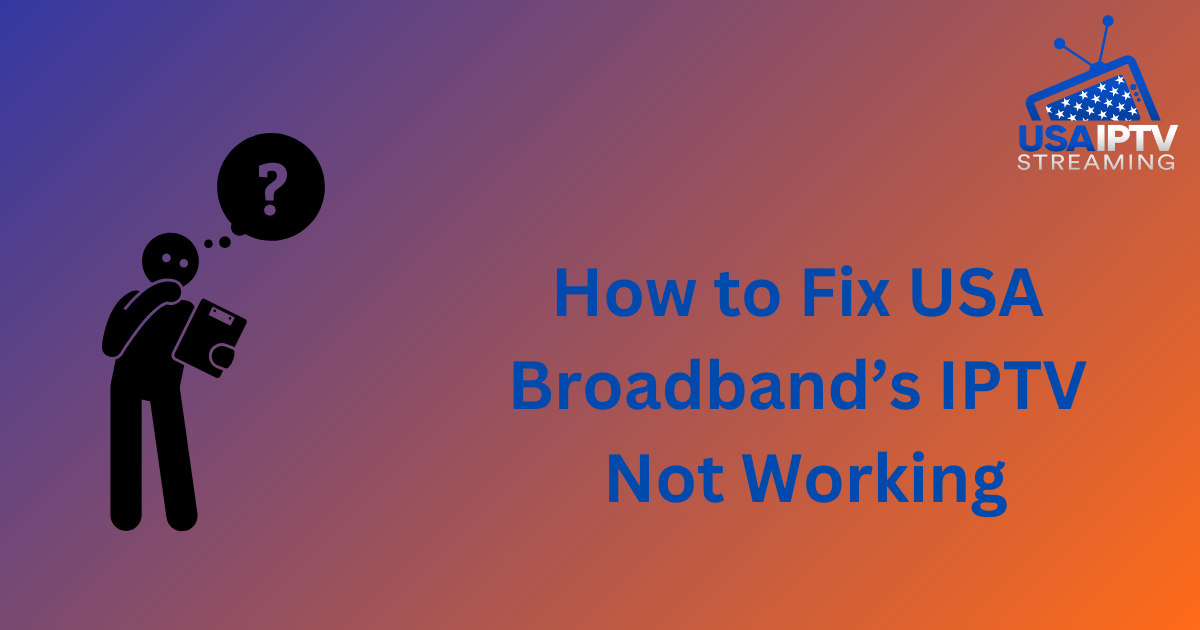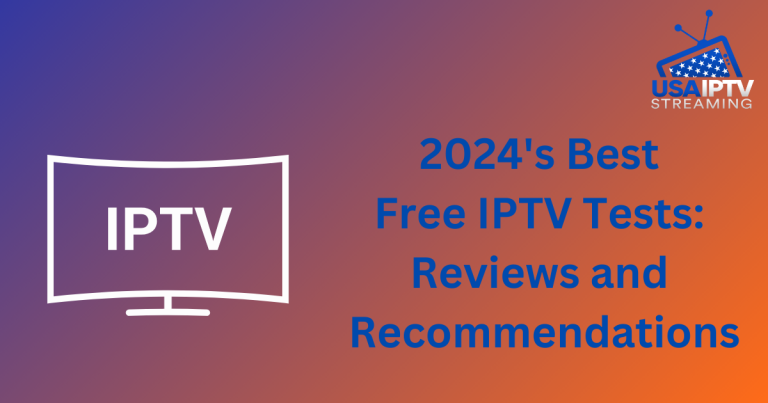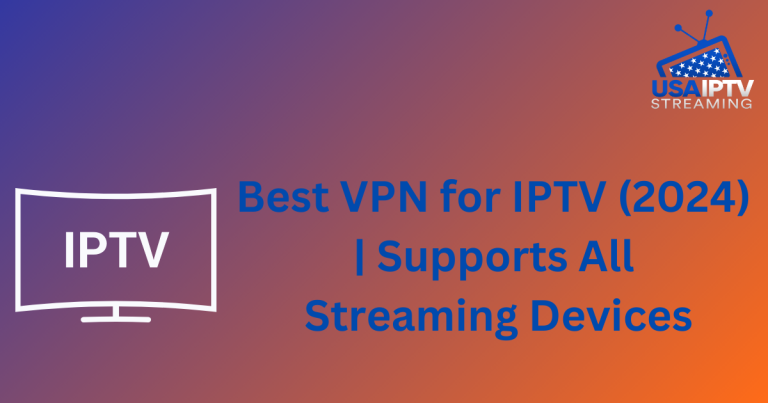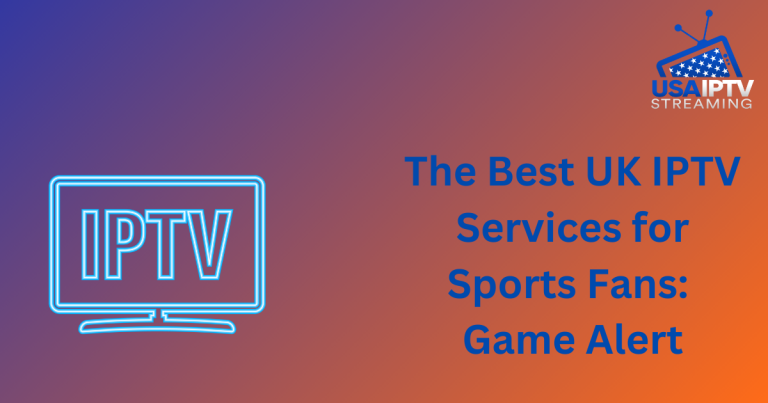How to Fix USA Broadband’s IPTV Not Working
You’re not alone if you’re a USA Broadband customer experiencing problems with IPTV service. Many users have encountered frustrating issues like reliability concerns, buffering, and poor streaming quality. This article explores the common challenges associated with using IPTV with USA Broadband and offers practical solutions to ensure a seamless streaming experience.
Understanding USA Broadband and IPTV
Internet Protocol Television (IPTV) is an innovative method of delivering television content over the Internet rather than through traditional cable or satellite systems. USA Broadband, a high-speed internet service provider known for its reliable and fast connectivity, is ideally suited for streaming IPTV content. IPTV offers a vast array of on-demand and live TV programming, from sports events to movies and series, providing viewers with a flexible entertainment option. Through its integration with IPTV, USA Broadband ensures a fast and dependable internet connection, contributing to a superior streaming experience.
What is IPTV?
IPTV enables viewers to access TV programs on various devices, including computers, smartphones, and smart TVs, through the internet protocol. Its key attractions include interactive features, such as time-shifted media, digital recordings, and video-on-demand, offering viewers enhanced viewing options. Unlike traditional broadcasting, IPTV requires a stable internet connection to deliver audiovisual content smoothly. This technology encodes, transmits, and decodes multimedia material using specialized servers and software, ensuring efficient and seamless entertainment delivery.
How Do IPTV and USA Broadband Work Together?
USA Broadband is well-equipped to meet the demands of IPTV services, providing low latency and continuous streaming of high-definition video content. Its network architecture is designed to offer constant playback and rapid channel switching on IPTV platforms, allowing users to enjoy their favorite shows and movies without interruption. The seamless integration of USA Broadband’s network protocols with IPTV standards results in an enhanced consumer entertainment experience, with fast data transmission and reliable service.
Common USA Broadband IPTV Issues
USA Broadband IPTV users may encounter common issues such as pixelation and video freezing, which can disrupt the viewing experience and cause dissatisfaction with the service. Another frequent problem is intermittent signal loss or connection failures, which can be particularly frustrating when trying to watch live TV.
Audio synchronization problems, where the sound is out of sync with the video, can further diminish the viewing experience. Additionally, IPTV subscribers may experience slow channel loading times, causing delays when switching between shows, especially during live events or when accessing on-demand content.
Lagging and Buffering
Lagging and buffering are significant annoyances when watching IPTV with USA Broadband. These disruptions may result from a weak Wi-Fi connection or interference from other devices. Hardware or software issues with the streaming device can also lead to interruptions, highlighting the importance of optimizing both network and device performance for a smooth viewing experience.
Connectivity and Compatibility Issues
Operational difficulties may arise if a user’s IPTV service is incompatible with their TV model or streaming device when using USA Broadband. Outdated firmware or software on the streaming device can also interfere with the smooth performance of IPTV services. Incompatible modems or routers may prevent IPTV subscribers from connecting, negatively impacting their viewing experience. Router and IPTV configuration settings inconsistencies can also lead to connection issues, requiring adjustments for optimal compatibility and uninterrupted streaming.
Enhancing IPTV Performance with USA Broadband
To maximize IPTV performance with USA Broadband, consider transitioning from Wi-Fi to a wired connection for a more reliable and stable signal. Upgrading your USA Broadband subscription to a higher bandwidth option can also ensure uninterrupted playback, free from buffering or poor quality. Reducing the number of connected devices during peak viewing hours can help ease network congestion and improve streaming quality.
Updating your router’s firmware is essential, as outdated firmware can cause performance problems when using IPTV with USA Broadband. By following these steps, users can enjoy a more seamless and enjoyable IPTV experience.
Bandwidth Management Techniques
To enhance IPTV performance on USA Broadband, users can utilize Quality of Service (QoS) settings on their router to prioritize IPTV traffic over other internet activities, ensuring a smooth streaming experience. Allocating bandwidth to non-essential devices and applications during high-demand periods can also improve IPTV performance. Upgrading to a fiber broadband connection can provide even greater capacity for uninterrupted IPTV streaming, further enhancing the viewing experience.
IPTV Router Configuration
Configuring multicast settings on your network is a crucial step in ensuring the efficient delivery of IPTV content with USA Broadband. This process minimizes network overhead and bottlenecks, optimizing the viewing experience. Enabling IGMP snooping on your router can improve the efficiency of IPTV multicast traffic, enhancing overall performance and making better use of network resources. Additionally, checking and adjusting your router’s firewall settings is essential to ensure that IPTV data flow is not unnecessarily blocked, which could severely impact streaming quality.
Improving the IPTV Experience with USA Broadband
USA Broadband’s high-speed internet enhances the IPTV-watching experience, ensuring smooth streaming and access to high-definition content. The provider’s reliable network architecture supports the uninterrupted transmission of IPTV content, improving the overall viewing experience for customers.
Streaming Stable Video with Ethernet Connections
Connecting your IPTV device to the router via Ethernet is a reliable way to ensure a stable and continuous streaming experience. Ethernet connections eliminate potential wireless interference, providing a more consistent IPTV service. Additionally, Ethernet connections can increase bandwidth, reduce latency, enhance security, and minimize packet loss, all of which contribute to a more reliable IPTV streaming experience.
Implementing Quality of Service (QoS) Settings
Configuring Quality of Service (QoS) settings is essential for optimizing the IPTV streaming experience with USA Broadband. By prioritizing IPTV traffic over other data, QoS settings can ensure smooth playback and prevent congestion. Customizing these settings allows users to allocate sufficient bandwidth to IPTV, reducing latency and lag, especially during peak usage hours. This fine-tuning of network settings guarantees reliable and high-quality streaming on USA Broadband.
Conclusion
Understanding the interplay between USA Broadband and IPTV is crucial for resolving common issues and enhancing performance. Users can significantly improve their IPTV experience by using Ethernet connections, employing bandwidth management strategies, and configuring their routers. USA Broadband’s robust network architecture ensures smooth and uninterrupted IPTV streaming, providing a top-notch entertainment experience. To further enhance streaming quality and minimize buffering and lag, configuring Quality of Service (QoS) settings and updating router firmware are essential steps. By implementing these measures, USA Broadband customers can maximize their IPTV viewing experience and consistently enjoy high-definition content.








